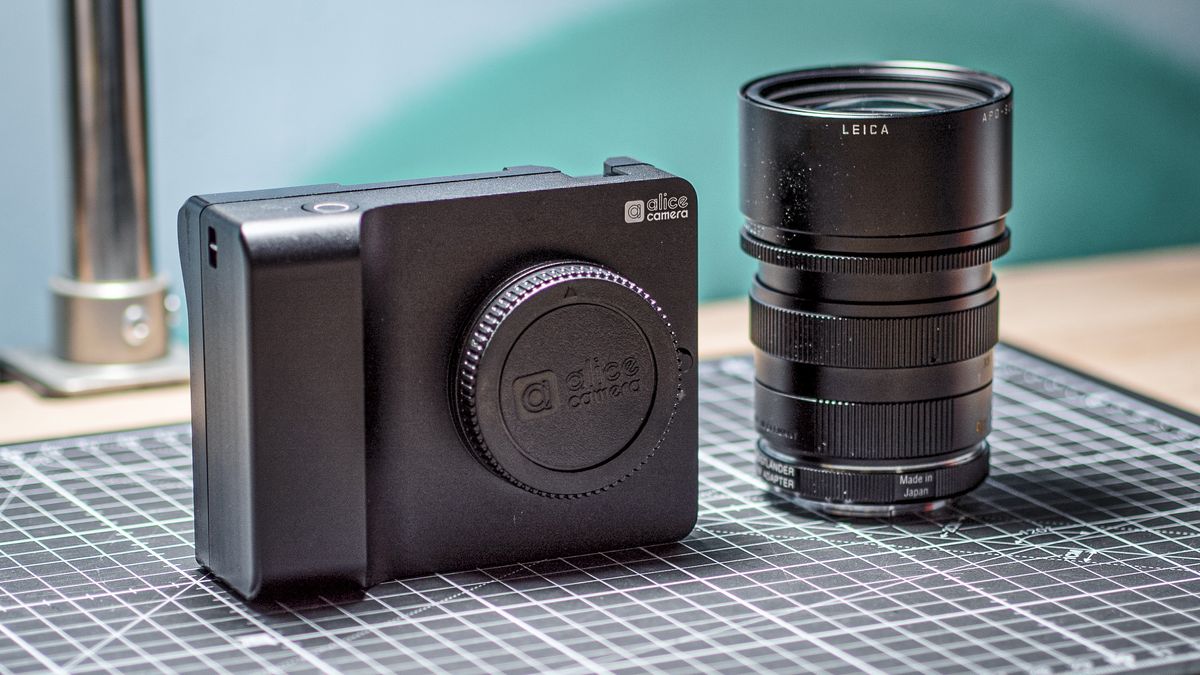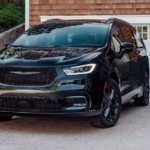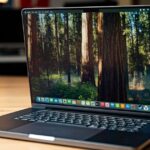Alice Camera: one-minute review
As someone who proudly runs a YouTube channel named “All The Gear, No Idea”, I’m always on the lookout for tech that promises to simplify the art of photography. Enter the Alice Camera: a camera body with Micro Four Thirds sensor and lens mount, powered by a Snapdragon chip, and that uses your smartphone as its viewfinder, all controlled through an app. Not a camera as we know it – something smarter.
A UK-based start-up brought this bold idea to life, and as one of the first 100 backers, I’ve spent three (very long) years waiting to see if it could live up to the hype. Spoiler alert: it’s been quite the ride.
The experience has been a mix of awe, impatience and ultimately, satisfaction. The Alice Camera is a deceptively simple concept: it pairs the processing power of a smartphone (a Qualcomm Snapdragon with 8-core CPU to be exact) with the optical performance of a proper camera like the Lumix G9 II. This setup provides access to a wide range of affordable and lightweight lenses, while making the notoriously cumbersome menus of traditional cameras a thing of the past.
For anyone who’s wrestled with the cryptic menus and camera settings on a Panasonic Lumix or Sony, this camera is a breath of fresh air. The interface is as intuitive as using your phone’s camera app, with the added benefit of real-time sharing of your shots. Refreshingly, Alice Camera’s software is open source, meaning if you’re smart enough, you can build extra features and settings, unlike the leading brands like Canon and Sony that maintain all the control.
Admittedly, the Alice Camera is facing some production delays – something I’ve experienced firsthand, having waited three years for mine. But as frustrating as the wait might be, I can assure you it’s worth it. For those still waiting for their camera, stay patient. The Alice Camera offers a unique blend of convenience, innovation, and quality that makes it stand out in a crowded market.
If you put the Alice Camera in the right hands, it can deliver professional-grade results that you simply wouldn’t achieve with one of the best camera phones alone. Personally, I believe it’s worth every penny. I took some sample shots with the Leica SL3, which is one of the best professional cameras available, with a 180mm lens and then used the Alice Camera with an equivalent Leica 90mm on it to achieve the same focal length. I couldn’t really tell the difference unless I went pixel-peeping, and who really does that on social media anyway?
As someone who usually fumbles with new tech, I’m completely sold on this one. Delays receiving the product aside, I’d have no hesitation recommending the Alice Camera to any photographer.
Alice Camera: price and availability
- $845 / £1,026 at time of writing
- Pre-orders for batch 4 at time of writing
- Prices could be different depending on which batch of backers you’re in
The Alice Camera isn’t cheap, but I think any criticisms that I’ve read about its price are a bit unfair. You have to bear in mind that this is a small company that doesn’t have the economies of scale of a larger traditional camera manufacturer. They are not Sony. They cant sell TV’s to make up the losses they could incur on a camera division. It’s $850 / £1,000 approx for the camera itself, and some argue that when paired with a high-end smartphone, you’re looking at a total of over $1,800 / £2,000. But here’s the thing: most of us already own a smartphone, so it’s really only the cost of the camera and lens you’re looking at. And for that outlay, you get the ability to instantly share and livestream high-quality smartphone-beating photos and videos. You really cannot factor in the cost of your smartphone. And if you really must do that, then buy an old iPhone 12 and it’s still compatible – at best that will cost you another $400 / £500.
Alice Camera: specs
| Sensor | Micro Four Thirds CMOS, dual-native ISO |
| Photo | 11MP |
| Video | 4K 30fps, 2K 60fps |
| Memory | 64GB built-in, with additional storage options |
| Dimensions | 112.5mm(W) x 85.0mm(H) x 44.3mm(D) |
| Weight | Approx. 350g |
| Battery | 5000 mAh |
Alice Camera: Design
- Premium metal body that is lightweight and with an ergonomic handle
- Secure phone grip that fits smartphones as small as the iPhone mini all the way to an iPhone 16 Pro max
- Simplified user interface and user experience making setup easy
Unboxing the Alice Camera felt like discovering a hidden gem. The sleek, lightweight design is deceptive – it feels premium, despite its featherlight build. The metal finish adds a level of robustness that’s reassuring. Inside the box, you’ll find a unique identifier that links the Wi-Fi on your phone to the camera, essential for pairing them up. The camera strap and build quality only add to the premium feel. However, what stands out most is the sensor: a micro four thirds unit that’s significantly bigger than anything you’d find on a standard smartphone. This offers more professional and realistic looking background separation, not the digitally created artificial bokeh that phones create.
Setting up the Alice Camera is as easy as it gets. You attach your phone via the extremely secure clamps (in my case, an iPhone 15 Pro Max) and pair the camera through the Alice Camera app, which is available for both iOS or Android. Once connected, you’re ready to shoot in seconds. The app has an intuitive user interface and experience. As a user you’re able to toggle between basic or advanced settings where you’re able to control everything from shutter speed to white balance, tint, colour enhancements and dynamic range.
Alice Camera uses a Micro Four Thirds lens mount – the same used by OM System cameras such as the OM-5 and Panasonic Cameras including the Lumix G9 II – and you can use a whole variety of lenses for this system. When you put the Alice Camera into manual focus mode a digital rangefinder graphic appears and offers a more tactile experience than I expected. That said, using manual focus can be tricky, particularly outdoors where the phone’s screen contrast struggles to differentiate between the subject and background. I found this especially frustrating when trying to focus on finer details. The shots looked great at first glance, but once zoomed in, the lack of precision became apparent – though that may have more to do with the budget Olympus (OM System) lens I was using. Autofocus is rolling out in the next few weeks and I cant wait!
Alice Camera: Performance
- Qualcomm Snapdragon and Google AI chip for running computational photography on device
- 11MP photos, while not the highest, are perfectly suitable for everyday photography and social media
- 4K 30fps and 2k 60fps video captures high-quality video footage, ideal for content creators and vloggers
Despite the occasional hiccup with manual focusing, I’ve managed to capture some stunning images by my standards. A particular highlight was photographing my friend Hannah using a Leica 90mm lens. The smooth resistance in the focus wheel made manual focusing far more satisfying than the cheaper alternatives, and the final images were sharp and full of character. I own a couple of Leicas and I’ve gotta say, in my incapable hands, I could seldom tell the difference in shots! In the right hands, gear really can make all the difference, but Greg Williams could take better shots with this than I could with a Hasselblad!
As for video, one complaint I’ve seen online is that the Alice Camera isn’t suitable for vlogging. Honestly, I’m not sure where that criticism comes from – vlogging with the Alice Camera is perfectly feasible. Using a wider lens like the Panasonic Lumix 9mm or a 12-60mm would cover most use cases. Yes, my 25mm lens was too tight, but no one would vlog with an equivalent of 50mm.
When you take a photos, the JPEGs are immediately sent to your smartphone’s camera roll, which means they’re ready to share instantly. Also because of Alice Camera’s AI-driven computational photography software pipeline my photos look great straight out of camera with very little editing. These JPEGs are 3MB in size so they don’t eat up too much storage on your phone.
The team behind the Alice Camera say that the software is open source, which in theory gives it unmatched potential for customization, with their own plans to add autofocus in the near future, in addition to the ways others can enhance the user experience. I find that extremely exciting.
Should you buy the Alice Camera?
Buy it if…
Don’t buy it if…
How I tested the Alice Camera
- Used as primary camera for over a month
- Paired with a variety of lenses
- Photos shot in RAW & JPEG
I bought two Alice Cameras and used them as my primary cameras for over one month. I’ve taken it on early morning photo walks, portrait photo environments, and used it mostly for stills but sometimes in video scenarios. It’s able to handle moving subjects, although I did struggle a bit with manual focusing. I avoided using the camera in heavy rain or difficult conditions but I did feel comfortable using it in cold and drizzly rain.
I paired the camera with the Lumix 25mm f/1.7 and the Leica 90mm f/2 APO-Summicron (via an adapter, the M-mount and MFT). The resolution for all the images was 11MP. I took all photos in RAW format. Shooting mostly with wide apertures I was able to get a nice blurry background but for some landscape photos I stopped down the aperture.
- First reviewed November 2024
Read the full article here














